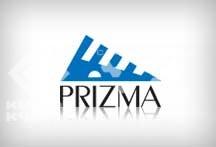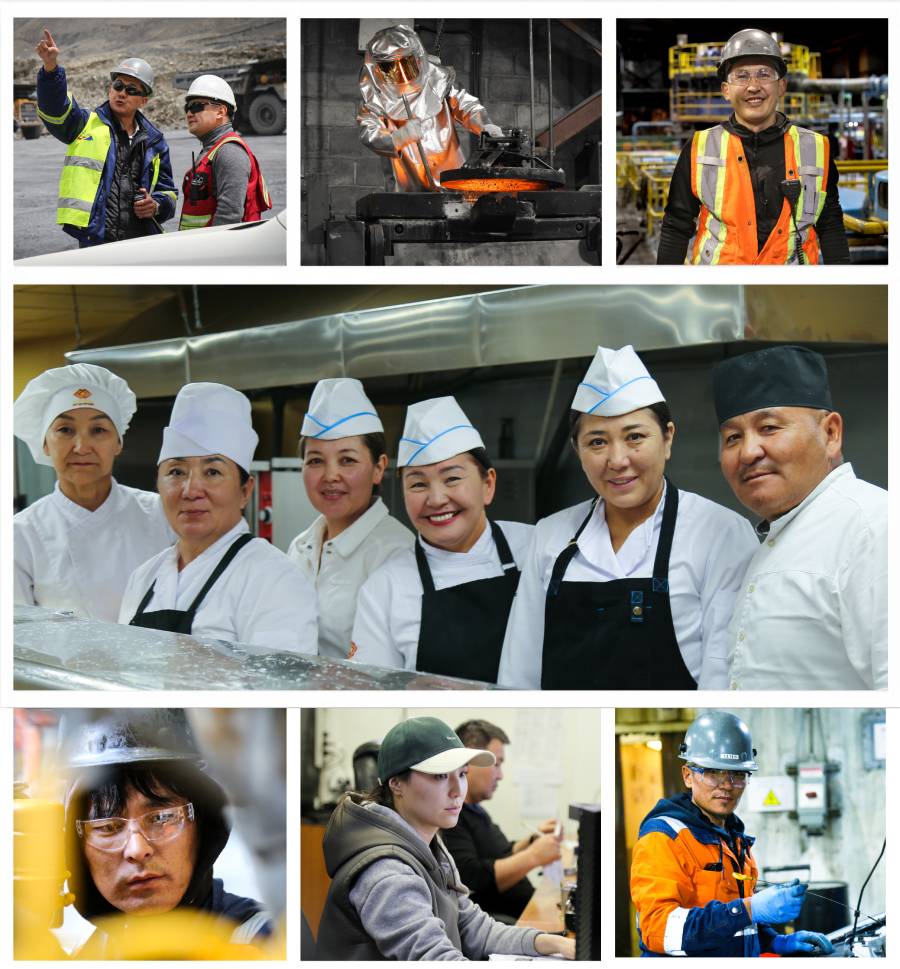Independent company Prizma has examined the report of the Commission for Kumtor, having called its conclusions improper and exaggerated.
published: 03 January 2013
 Another Commission for Kumtor is preparing to submit its report. The deadline of document publication is postponed all the time. The members of the Commission, as skillful showmen, heat up the public interest, alluding to numerous violations allegedly committed by Kumtor company. Meanwhile, independent company Prizma has analyzed the report of the Commission, established in February 2012, and provided an independent assessment. According to international experts, “findings made in the report are improper, unfounded or exaggerated” at all points. Let’s look at them closely.
Another Commission for Kumtor is preparing to submit its report. The deadline of document publication is postponed all the time. The members of the Commission, as skillful showmen, heat up the public interest, alluding to numerous violations allegedly committed by Kumtor company. Meanwhile, independent company Prizma has analyzed the report of the Commission, established in February 2012, and provided an independent assessment. According to international experts, “findings made in the report are improper, unfounded or exaggerated” at all points. Let’s look at them closely.
Deglaciation is one of the main claims laid by the activists, home-grown environmentalists and the same Commission against the gold mining company. “The rate of melting increases in the republic every year,” experts raise the alarm.
“That’s the case,” Mehrdad Nazari, expert of Prizma Company, agrees with the statement. “But, alas, the whole world is currently facing the same situation. By the way, this very claim indicates that the State Commission, as well as the Interagency Commission for Kumtor, have approached the preparation of reports in a very differentiated way. They have ignored studies carried out by major international institutions such as the World Bank or the International Monetary Fund. Commission for Kumtor did not bother to study, for example, the United Nations Report, which states that “the rate of glacier melting has doubled in the past few years all over the world, which can lead to the destruction of some ecosystems and climate change.” Unfortunately, glaciers are melting everywhere. Naturally, Kumtor doesn’t have any significant impact on these processes.
However, there’s a statement that “the Petrov glacier, located in the central Tien Shan, near the Kumtor mining area, is melting faster than others.”
“Monitoring of this glacier had started much earlier than the attempt to develop the gold mine has been made,” Mehrdad Nazari says. “Results of these observations have been documented already for several decades. The findings indicate that the climate change is a major cause of melting and retreat of glaciers around Kumtor and throughout Kyrgyzstan.”
The same opinion is shared by many local experts. In particular, expert of the State Agency for Geology and Mineral Resources, head of the engineering and geological field party Sergey Yerokhin noted that “the rate of glacier melting depends on climatic, morphological and geographical conditions. The greatest influence is exerted by global climatic changes, as well as the type of rocks, surrounding the glacier, and shading of its peaks, while the industrial facilities and development of various deposits almost do not affect the rate of melting.”
Tailings storage facility of Kumtor is another actively discussed problem. They say that it was built in a wrong place and in the wrong way.
“To answer this question, we must get back to the very beginning of Kumtor project,” Mr. Nazari says. “In 1992, when the feasibility study was developed, a great number of experts carefully studied the tailings storage facility’s location. Impeccable reputation of these experts guarantees that the company has chosen the best location for construction of the facility. As for its quality, it is built in compliance with all international rules and standards.
By the way, Kumtor is very nearly the only company in Kyrgyzstan, which adheres to these waste disposal standards. In particular, the UNECE Report for 2009 states that “Kyrgyzstan lacks landfills for non-toxic waste and hazardous waste storage facilities. More than half of existing dumping sites do not meet sanitary standards. The practice of uncontrolled landfill sites is widely used in the country. There is only one authorized area for sanitary landfill in Bishkek, the boundaries of which have already greatly extended. Only 1% of municipal waste is recycled. We do not have a system for waste separation.”
According to the study of USAID, “medical wastes (infectious, non-infectious) are dumped in a pile in unprotected areas accessible to people, animals and birds. Combustion in the pits or containers is the main way of waste disposal, which causes a significant harm to the environment.”
“Thus, it may be concluded that the tailings storage facility with airtight protection, developed by engineers and located at the Kumtor mine, by quality leaves behind many, if not all, such or similar facilities of the Kyrgyz Republic,” Prizma sums up.
“In general, concerns of the population of Kyrgyzstan about the tailings storage facility are quite justified,” Nazari believes. “Since the Soviet times, Kyrgyzstan has got a great number of tailings storage facilities, which are very badly maintained by the current government. Therefore, there’s no surprise that ordinary Kyrgyz citizens do not trust the investor. If even our own officials do not care about the tailings storage facilities, what can we expect from the foreigners? But these conclusions are totally unfounded, though understandable.”
Recall that Kumtor mine is located in the region, which is home to rare or endangered species. This neighborhood allowed them to make another charge: deposit development reduces the number of unique animals and plants.
“To answer this question, we have to get back to 1992 again,” the expert said. “It is clear that every human activity causes damage to the natural environment. To minimize this impact, Kumtor company carries out a range of measures. In particular, Sarychat-Ertash National Reserve, which is the core of the Issyk-Kul Biosphere Reserve protected by UNESCO, was founded in 1995 with the approval and financial support from Kumtor Operating Company. KOC also directly helps biologists and environmentalists who study populations of snow leopard, argali, ibex and other animal species. Now the territory of Kumtor is a biodiversity haven due to the policy of KOC, prohibiting hunting and fire weapon employment. Let’s not forget that with the help of Kumtor Operating Company Kyrgyzstan has got a possibility to keep constant watch over the natural facilities and effectively monitor the weather.”
Gold mining company is not going to rest on its laurels. As we learnt, Kumtor develops a biodiversity conservation plan for the region, which assumes the implementation of priority environmental programs. The gold mining company will provide support to these programs already this year.
Far-sighted citizens are looking for the answer to the question – what will happen to the mine after the Kumtor project is completed. This is not just the idle question.
In this matter, Kumtor Operating Company acts in accordance with the strictest international requirements,” Nazari says. “Moreover, KOC refers to this issue stricter than it is required by the legislation of the Kyrgyz Republic. The company already has an applicable and regularly updated conceptual plan of mine closure. The estimated cost of closure is $30 million. KOC has recently increased this sum up to $37 million. So, in this sense Kumtor is a totally unique project implemented in the territory of Kyrgyzstan.”
Having analyzed reports of commissions for Kumtor, experts of Prizma company came to conclusion that this document was unfounded, biased and undefended by evidences.
However, we expected that. That is the way of the world: the task of each new commission “studying” activities of Kumtor is to blackmail the investor.
But that is not the point now. In fact, both the officials and environmentalists have correctly identified the problem. Glaciers in the country are melting, the species of flora and fauna are reducing, the water is being polluted. But they seek for the cause of all these evils in a wrong place.
International experts have long been trying to draw attention of our officials to our domestic problems. In particular, UNICEF raises the alarm about the fact that “inadequate household waste disposal, insufficient hygienic conditions, lack of safe drinking water” lead to the increase in the sick rate among the population.
UNESCO notes that “overgrazing, collection of bulbs and plants by locals, uncontrolled hunting and poaching pose a significant threat to endemic and biological diversity of plant and animal species, indigenous to our republic.”
Some experts urge to treat our glaciers as a national wealth. In particular, Sergey Erokhin noted that “developed countries understand the importance of freshwater resources, provided by the glaciers. Glaciers in Kyrgyzstan are abandoned, they are not considered as natural resources. That is why nobody monitors the state of glaciers, although freshwater will be very expensive in the near future.”
Kyrgyzstan should turn attention to all these issues immediately. Otherwise Mayan prophecies may be right. And we’ll face not only the end of light and gas, but also the end of pure water and clean air.
However, to solve these problems, we should look for the real cause rather than a scapegoat. And Kumtor is ready to help the country in addressing these challenges. But only help. We should solve them ourselves.
 P.S. However, it seems that our Government is really searching for a scapegoat. In particular, Kaliya Moldogaziyeva, member of the Interagency Commission for assessment of Kumtor’s compliance to the requirements of environmental and industrial safety, declared in one of her interviews that involvement of Prizma by Kumtor Operating Company generates a “conflict of interests”.
P.S. However, it seems that our Government is really searching for a scapegoat. In particular, Kaliya Moldogaziyeva, member of the Interagency Commission for assessment of Kumtor’s compliance to the requirements of environmental and industrial safety, declared in one of her interviews that involvement of Prizma by Kumtor Operating Company generates a “conflict of interests”.
In support of her conclusion, she says that ten years ago Mehrdad Nazari, Director of Prizma, was an employee of the EBRD, and that the EBRD is a creditor of Centerra (Kumtor is a subsidiary company of Centerra). Therefore, according to Mrs. Moldogaziyeva, the EBRD “does not recognize the report of Prizma.” But even in this case, conclusions made by Kaliya Moldogaziyeva, does not reflect the actual situation and misinform the public. Just judge for yourself.
“The fact of my past employment with the EBRD is clearly reflected in my professional resumes, attached to all independent reviews of Prizma,” Mehrdad Nazari says. “They were published on the Internet in April and October 2012, so it is unclear why now Mrs. Moldogaziyeva has decided to raise the issue of my work with the EBRD 10 years ago. I expressed my own independent opinion in all independent reviews of Prizma and was not influenced by Kumtor, Centerra or the EBRD.
Secondly, the EBRD in its work is guided by the very clearly defined Professional Code of Conduct (see: http://www.ebrd.com/pages/about/integrity/ compliance.shtml). The Code also considers conflicts of interests as applied to former employees of the EBRD. Thus, Rule 6, Paragraph (d) reads: “Except for the cases where special permission is applied, none of the employees that left the Bank can provide any professional services within one year after the dismissal to any organization or its department(s) on any matter that affects interests of the Bank or where the Bank is one of the parties involved, as well as on the issues in which this Bank employee was personally and substantially involved during his work in the Bank.”
According to Mrs. Moldogaziyeva, I have not been working at the EBRD for ten years. This means that the EBRD Professional Code of Conduct in no way implies that my employment with Kumtor through Prizma and my role as an independent consultant generate the conflict of interests for Kumtor, Prizma or the EBRD, mentioned by Mrs. Moldogaziyeva.
Thirdly, it is unclear why Mrs. Moldogaziyeva asserts that the EBRD declared it “doesn’t recognize the report of Prizma.” Apart from meeting with Mrs. Moldogaziyeva and several experts, who participated in her critical investigation of Kumtor’ activities in mid-2012 (during these meetings she has never raised the issue of conflict of interests), I also met the EBRD staff. During my meetings and discussions of Kumtor project with the EBRD staff, the Bank representatives didn’t say a word about the possible conflict of interests and non-recognition of any independent expert reviews made by Prizma. I regard the statement of Mrs. Moldogaziyeva as unfounded, unsubstantiated and untrue.
And finally, if Mrs. Moldogaziyeva doesn’t want to recognize findings of Prizma, which have been made based on the results of almost 50 different studies and assessments, made by a wide range of organizations, from publications of the Kyrgyz government to studies of the UN Economic Commission for Europe, I would ask her to check out the latest report of Environmental Resources Management Limited (ERM), dealing with the issues of the natural resources management. Not so long ago ERM has been invited by the SHE (Safety Health Environment) Committee and the Board of Directors of Centerra to conduct an independent review of the environmental situation at Kumtor mine and related enterprises.
It should be emphasized that findings of ERM are very similar to the conclusions set out by Prizma in his report, and findings of ERM and conclusions of Prizma for the most part refute data of Mrs. Moldogaziyeva. Conclusions of ERM, in particular, read: “No severe or significant environmental violations had been found either during document inspection, or during the visit to the deposit, or during analysis of legislative acts.”
– the U.S.-based Prizma LLC offers independent consultations. Its expertise includes evaluation of the Corporate Social Responsibility (CSR), environmental and social impact assessment (ESIA) and audit, interaction of stakeholders and sustainable development, as well as the application of IFC production standards and similar international criteria. Prizma also offers expert witness services in international arbitration proceedings.
– Sarychat-Ertash State Reserve, created in 1995 with the approval and financial support from Kumtor Operating Company, is the core of the Issyk-Kul Biosphere Reserve protected by UNESCO. Since 1999, they have succeeded not only in preservation of animal numbers, but have also restored or increased the numbers of argali from 1,100-1,250 to 2,600 heads; snow leopards from 0 to 18 species, bears from 0 to 6-7 species; ibex from 600 to 850-900 heads.
– Mehrdad Nazari, PhD, MBA, MSc, Senior CSR & ESIA Advisor. He has 20 years of international working experience, he is a leading expert in the Corporate Social Responsibility (CSR) and Environmental and Social Impact Assessment (ESIA), as well as the owner-manager of Prizma LLC, specializing in consulting work. He works as an expert witness at the World Bank’s International Center for Settlement of Investment Disputes in Washington. He also was a member of the International Finance Corporation’s Expert Council for consulting the Ombudsman on the issues of mining projects’ compliance with established policies and procedures.


